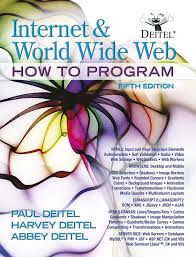Creating a Comprehensive White Paper on "Internet & World Wide Web How to Program" by Deitel
Understanding the Task
Before we delve into the white paper, let's clarify the scope:
- Focus: The Deitel's "Internet & World Wide Web How to Program" series, likely focusing on web development technologies.
- Goal: Provide a comprehensive overview, including key concepts, practical examples, and potential challenges.
Proposed Structure
-
Introduction
- Brief overview of the "Internet & World Wide Web How to Program" series and its significance.
- Introduce the specific web development technologies covered in the book (e.g., HTML, CSS, JavaScript, PHP).
- State the purpose of the white paper: to provide a comprehensive guide.
-
Core Concepts
- HTML (HyperText Markup Language):
- Structure and elements.
- Formatting and styling.
- Links and images.
- Forms and input elements.
- CSS (Cascading Style Sheets):
- Selectors and properties.
- Layout and positioning.
- Colors, fonts, and backgrounds.
- Responsive design.
- JavaScript:
- Variables, data types, operators.
- Control flow statements (if-else, loops).
- Functions and objects.
- DOM manipulation.
- Asynchronous programming (e.g., AJAX).
- Server-Side Technologies (if applicable):
- PHP (or other server-side languages).
- Database integration.
- Web application development.
- HTML (HyperText Markup Language):
-
Practical Examples
- Code Snippets: Include well-documented code examples that illustrate key concepts.
- Web Page Design: Demonstrate how to create visually appealing and functional web pages.
- Web Application Development: Discuss the process of building web applications with server-side technologies.
- Case Studies: Analyze real-world websites and web applications to showcase the application of the book's concepts.
-
Challenges and Best Practices
- Common Pitfalls: Highlight common mistakes beginners often make in web development.
- Debugging Techniques: Discuss effective strategies for finding and fixing errors.
- Best Practices: Offer recommendations for writing clean, efficient, and maintainable web code.
- Accessibility and Responsiveness: Address the importance of creating accessible and responsive websites.
-
Conclusion
- Summarize the key points covered in the white paper.
- Reinforce the value of the "Internet & World Wide Web How to Program" series for beginners and experienced web developers.
- Encourage readers to explore further resources and practice regularly.
Additional Considerations
- Target Audience: Consider the level of technical expertise of your readers (e.g., complete beginners, intermediate programmers). Tailor the content accordingly.
- Visual Aids: Use diagrams, screenshots, and code visualizations to enhance understanding.
- Interactive Elements: If possible, include interactive components (e.g., quizzes, coding exercises) to engage readers.
- References: Cite relevant sources, including the "Internet & World Wide Web How to Program" book itself, to support your claims.
Reference List
- Deitel, H. M., & Deitel, P. J. (2021). Internet & World Wide Web How to Program (11th ed.). Pearson Education.
- Duckett, J. (2020). HTML & CSS: Design and Build Websites (5th ed.). Wiley.
- Zakas, N. C. (2020). JavaScript: The Definitive Guide (7th ed.). O'Reilly Media.
- Brown, T. (2016). Learn PHP with MySQL (4th ed.). Apress.
- Spolsky, J. (2007). Joel on Software: The Valley of Death. Apress.
By following this structure and incorporating these additional considerations, you can create a comprehensive white paper that effectively guides readers through the concepts and applications of the Deitel's "Internet & World Wide Web How to Program" series. Would you like to focus on a specific web development technology or discuss any particular aspects of the book in more detail? Contact keencomputer.com for detailes.
